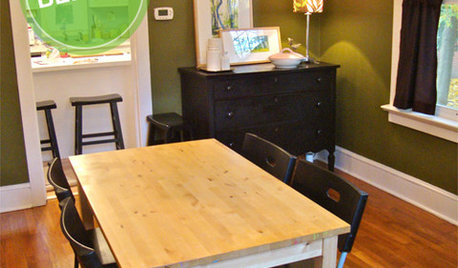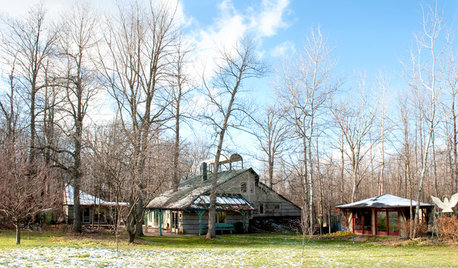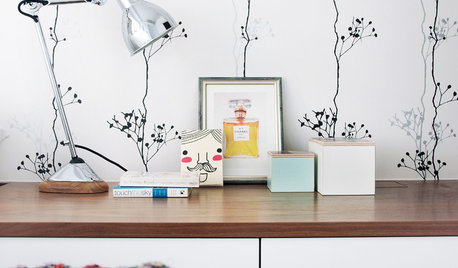Ready for the silliest question ever on this forum?
carrie630
16 years ago
Related Stories

GREEN BUILDINGOff the Grid: Ready to Pull the Plug on City Power?
What to consider if you want to stop relying on public utilities — or just have a more energy-efficient home
Full Story
FEEL-GOOD HOMEThe Question That Can Make You Love Your Home More
Change your relationship with your house for the better by focusing on the answer to something designers often ask
Full Story
DOORS5 Questions to Ask Before Installing a Barn Door
Find out whether that barn door you love is the right solution for your space
Full Story
DINING ROOMSDesign Dilemma: My Dining Room Needs Revamping!
Watch a dining-room makeover unfold in the Houzz Questions forum
Full Story
DECORATING GUIDESDecorating 101: How to Use White Right
If you’ve ever been in white-paint-swatch limbo, you know white can be tricky to work with. Here’s how to get the fresh look you’re after
Full Story
PRODUCT PICKSGuest Picks: Tools and Accessories for Inspired Spring Cleaning
You'll be happy to roll up your sleeves and get to work cleaning around the home with these accoutrements at the ready
Full Story
FUN HOUZZ31 True Tales of Remodeling Gone Wild
Drugs, sex, excess — the home design industry is rife with stories that will blow your mind, or at least leave you scratching your head
Full Story
LIFEWhen You're Suddenly Solo at Home
Whether you stay in a home alone or move on, these strategies from professional organizers can help you with the process
Full Story
GREEN BUILDINGGoing Solar at Home: Solar Panel Basics
Save money on electricity and reduce your carbon footprint by installing photovoltaic panels. This guide will help you get started
Full Story
LIFE10 Steps for Saying Goodbye to Sentimental Objects
Are keepsakes cluttering your space and your life? Consider this approach for letting go and moving on
Full StoryMore Discussions







Iris GW
carrie630Original Author
Related Professionals
Danbury Landscape Architects & Landscape Designers · East Rancho Dominguez Landscape Architects & Landscape Designers · Desert Hot Springs Landscape Contractors · Lady Lake Landscape Contractors · North Lauderdale Landscape Contractors · Rockland Landscape Contractors · Streamwood Landscape Contractors · Vallejo Landscape Contractors · Parker Fence Contractors · Seymour Fence Contractors · Silver Spring Fence Contractors · Tulsa Fence Contractors · La Puente Fence Contractors · Orland Park Siding & Exteriors · Wareham Siding & Exteriorskwoods
joepyeweed
Iris GW
Lynda Waldrep
carrie630Original Author
garden_junkie_carrie
Lynda Waldrep
bob64
carrie630Original Author
ladyslppr
garden_junkie_carrie
Iris GW
Lynda Waldrep
Iris GW
Lynda Waldrep
cynandjon
garden_junkie_carrie
Iris GW
Lynda Waldrep
kwoods
waplummer
carrie630Original Author
bogturtle